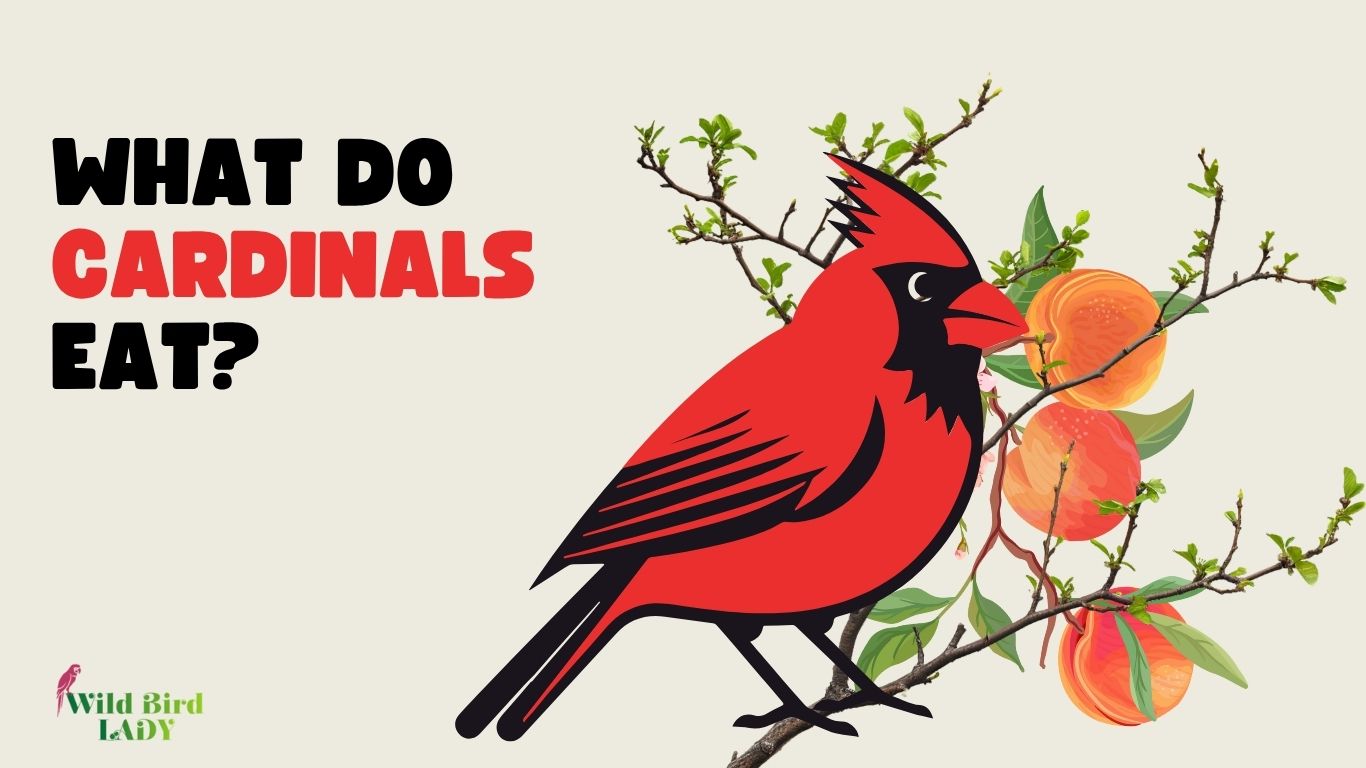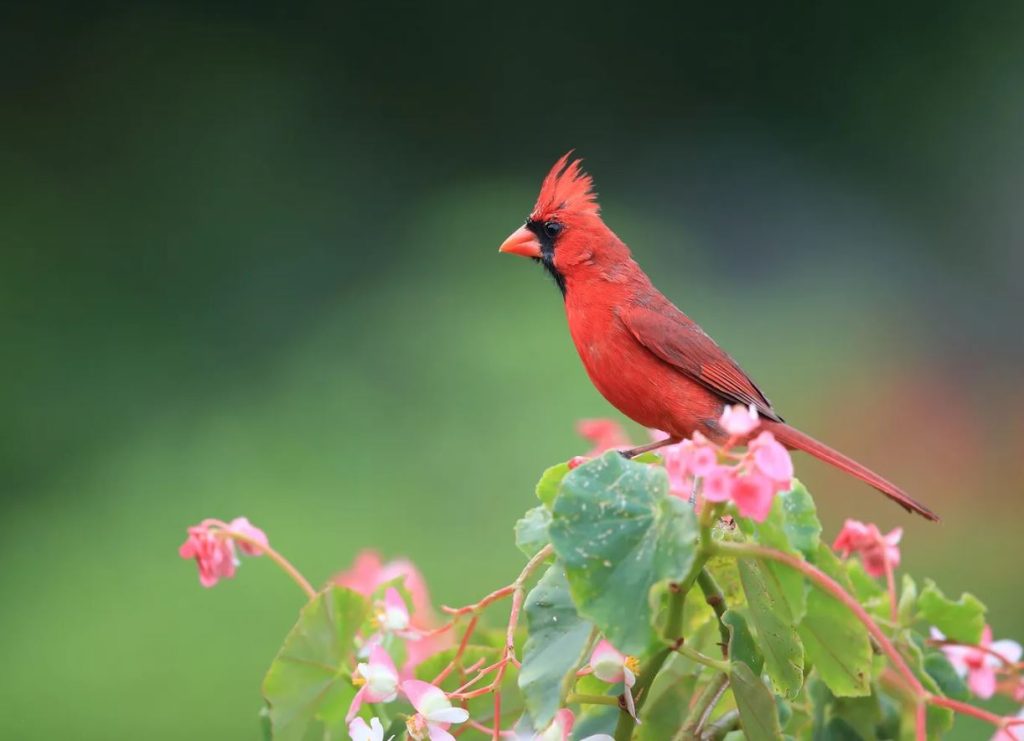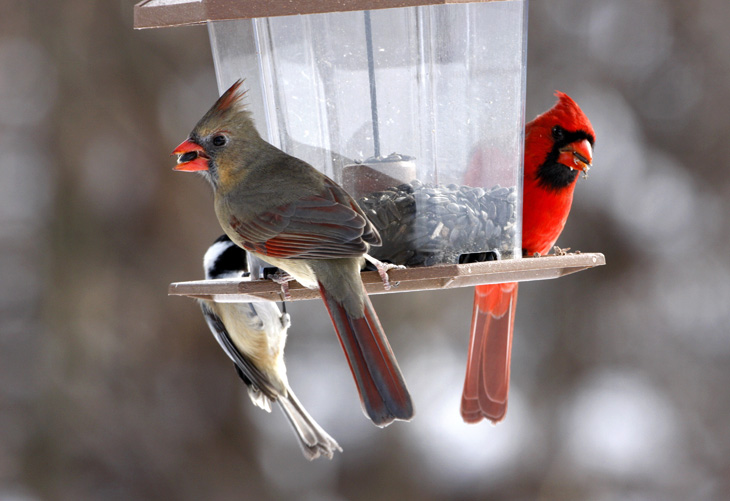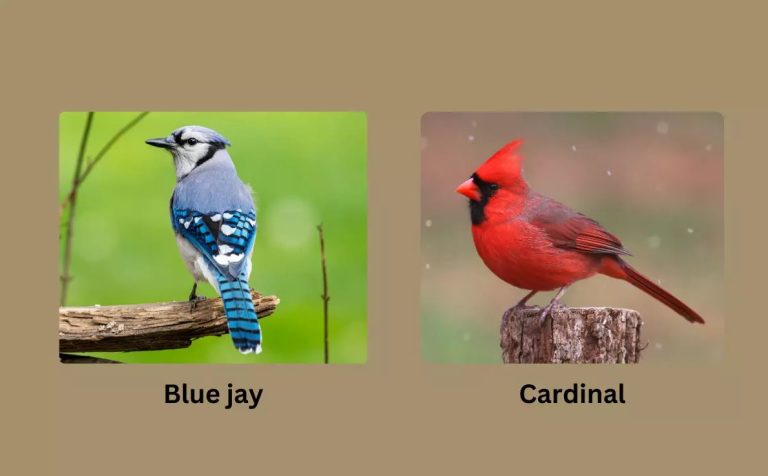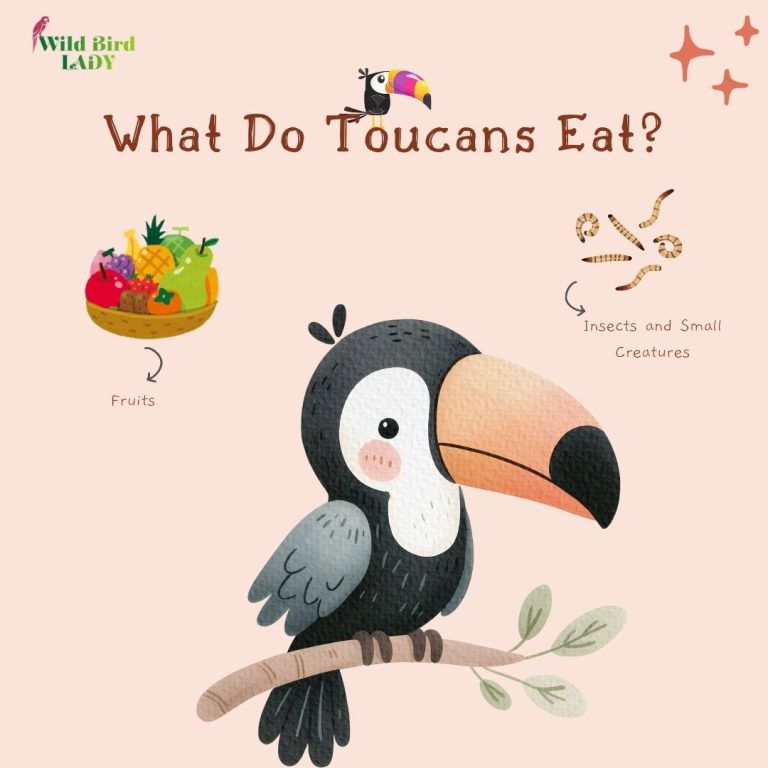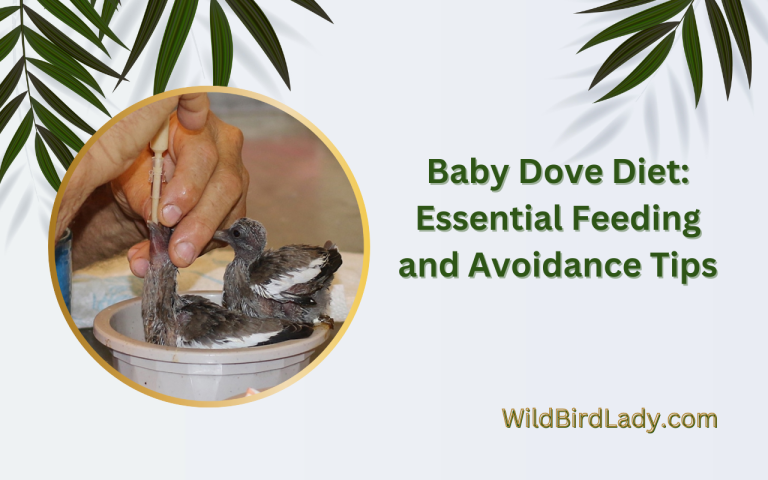What Do Cardinals Eat? 9 Foods That Will Bring Them Flocking to Your Yard
By Rifat Ahmed – Birdwatching Enthusiast with 13 Years of Experience
There’s something undeniably magical about seeing a brilliant red Northern Cardinal perched against the greenery of your backyard. Over the past 13 years of birdwatching, I’ve spent countless mornings observing these striking songbirds. And if there’s one thing I’ve learned, it’s this: if you feed them right, they’ll keep coming back—often with friends in tow!
But that brings us to the essential question: What do cardinals eat? What kind of cardinals food will make your feeders irresistible?
Let’s dive into the cardinals’ diet—both in the wild and in our backyards—and explore 9 foods that will have them flocking to your garden in no time.
What Do Cardinals Eat in the Wild?
According to All About Birds by the Cornell Lab of Ornithology, Northern Cardinals have a varied diet. They’re primarily granivores, meaning seeds make up a big part of their meals, but they also eat fruit and insects—especially during the breeding season when they need extra protein for their young.
Here’s a breakdown of their natural diet:
- Seeds (primary food source)
- Berries and fruits
- Insects (especially beetles, caterpillars, and grasshoppers)
During summer, you’re more likely to see them foraging for insects in bushes and shrubs. In fall and winter, seeds become more important. Understanding this seasonal shift can help you provide food that’s tailored to their needs year-round.
The Importance of the Right Cardinal Food
While cardinals aren’t picky eaters, offering the right food increases your chances of attracting and keeping them in your backyard. I’ve seen people get frustrated when they put out a generic seed mix only to find it untouched. The key is knowing what cardinals truly love—and offering it consistently.
Let’s take a closer look at the 9 best foods for cardinals:
1. Black Oil Sunflower Seeds – A Cardinal Favorite
If you can offer only one thing, make it black oil sunflower seeds.
Cardinals love them because:
- They’re rich in fat and protein
- The thin shells are easy for cardinals to crack
- Their size is ideal for their sturdy, cone-shaped beaks
Pro Tip: Use a feeder with a tray or large perches. Cardinals prefer open platforms or hopper-style feeders because they’re not great at clinging to small perches like finches or chickadees.
2. Safflower Seeds – A Squirrel-Resistant Option
Want to attract cardinals while discouraging squirrels? Try safflower seeds.
Cardinals adore them, but squirrels (and some other birds) tend to leave them alone. These seeds are high in fat and protein, making them an excellent year-round food.
My experience: I’ve used safflower in tray feeders with great success. It’s especially useful in urban areas where squirrels are persistent.
3. Cracked Corn – Budget-Friendly and Effective
Cracked corn is a great choice if you want to feed cardinals without breaking the bank.
It’s not as nutrient-dense as sunflower or safflower, so I recommend offering it in combination with other seeds. Ground-feeding birds like cardinals, mourning doves, and juncos will appreciate it.
Make sure it’s:
- Fresh (old corn can mold quickly)
- Offered on a platform or ground feeder
4. Peanuts – A Protein-Packed Treat
Cardinals may not crack open whole peanuts like jays, but they love chopped or shelled peanuts.
Peanuts provide:
- High fat and protein content
- Energy for winter and breeding seasons
I suggest offering unsalted, dry-roasted peanuts—either whole (shelled) or chopped. Mix them into your seed blend or offer them in a separate dish.
5. Mealworms – The Breeding Season Booster
During nesting season, cardinals increase their intake of insects, and mealworms are a perfect protein source.
You can offer:
- Live mealworms (more appealing but require more care)
- Dried mealworms (convenient and long-lasting)
Female cardinals often feed these to nestlings. Placing them in a shallow dish near dense shrubs increases the chance of attracting hungry parents.
6. Fresh Berries – Nature’s Candy for Cardinals
In the wild, cardinals love berries like:
- Dogwood
- Serviceberry
- Elderberry
- Mulberry
These fruits are rich in antioxidants and moisture—perfect for summer hydration. You can either:
- Plant native berry-producing shrubs
- Offer small pieces of fresh or dried berries in a dish
Avoid sugary dried fruits meant for human snacks; stick with unsweetened and preservative-free options.
7. Apples and Other Fruit Chunks
Beyond berries, cardinals enjoy:
- Apple slices
- Orange sections
- Grapes (halved)
I’ve placed apple wedges on my tray feeders, and cardinals have come within minutes, especially in the early morning. Just remember to:
- Remove uneaten fruit daily to avoid mold
- Avoid citrus peels or spoiled fruit
8. Millet (White Proso) – Loved by Ground Feeders
Although millet is often considered “filler” in seed mixes, white proso millet is actually a favorite of many ground-feeding birds—including cardinals.
Spread it:
- On the ground or a low platform feeder
- In sheltered areas to prevent spoilage
Avoid red millet or dyed versions—cardinals usually ignore them.
9. Homemade Cardinal Suet – Winter Fuel
While suet is typically associated with woodpeckers, you can make a cardinal-friendly suet mix by combining:
- Lard or suet base
- Crushed sunflower seeds
- Oatmeal
- Dried fruit
Shape the mixture into balls or cakes and place them on a tray or suet feeder with a large platform.
Cardinals appreciate the high-fat content during cold months.
Bonus Tip: Avoid These Common Mistakes
While feeding cardinals is rewarding, a few missteps can drive them away:
❌ Using feeders with small perches – Cardinals are medium-sized and need sturdy platforms.
❌ Offering spicy or flavored seed – Unlike squirrels, cardinals are sensitive to spices.
❌ Neglecting feeder cleanliness – Moldy seed or droppings can make them sick.
Seasonal Shifts in the Cardinals’ Diet
One of the most fascinating aspects of feeding cardinals is how their diet changes with the seasons. These birds are highly adaptable and instinctively adjust their food intake based on what their bodies—and their families—need most during different times of the year.
Spring and Summer: A Protein-Packed Diet for Growth
As temperatures rise, so do the energy demands of cardinal families. Spring and early summer mark the breeding and nesting season, when adult cardinals shift their focus from seeds to high-protein foods. During this time, they actively hunt for:
- Beetles
- Caterpillars
- Grasshoppers
- Spiders
- Other soft-bodied insects
These protein-rich foods are vital for:
- Fueling the adults during the intense activity of mating and nest building
- Feeding nestlings, who need protein for rapid growth and feather development
You may also see an uptick in cardinals foraging on fruit-bearing shrubs. Fruits like mulberries, elderberries, and serviceberries provide moisture and nutrients during warmer months.
📝 Pro Tip from My Experience: During nesting season, I always supplement feeders with live or dried mealworms and place them near dense shrubs where cardinals feel safe. It’s a game-changer for attracting breeding pairs.
Fall and Winter: Fat-Rich Foods for Survival
As temperatures drop, insects become scarce, and cardinals turn to energy-dense foods to survive the cold. Their fall and winter diet is dominated by:
- Seeds (especially black oil sunflower and safflower)
- Nuts (like chopped peanuts)
- Grains (cracked corn, millet)
- High-fat suet mixes
These foods help cardinals:
- Build fat reserves for insulation
- Stay energized during long, cold nights
- Remain active even when snow covers the ground
🎯 In my backyard, winter is when I see the highest cardinal activity—especially at sunrise and sunset. Keeping feeders full during these hours has turned my garden into a cardinal hotspot, even during snowstorms.
Why Seasonal Feeding Matters
By adjusting your offerings based on the season, you’re not just feeding cardinals—you’re supporting their entire life cycle:
- Help them raise healthy chicks in spring
- Provide hydration in summer through fruits
- Offer warmth and calories in fall and winter
The result? Year-round visits from these brilliant red beauties—and the satisfaction of knowing you’re truly meeting their needs.
How to Attract Cardinals to Your Yard
Feeding is just one part of the equation. Here’s how to make your backyard truly cardinal-friendly:
1. Provide Dense Shrubs or Evergreens
Cardinals are shy and prefer areas where they can perch or retreat quickly. Native bushes or hedgerows work great.
2. Use Platform Feeders or Hopper-Style Feeders
As mentioned, cardinals avoid feeders that are too narrow or high off the ground.
3. Offer Fresh Water
A simple birdbath—especially with a dripper or bubbler—can make your yard irresistible, particularly in winter when water sources freeze.
4. Limit Competition
Cardinals are not aggressive. To prevent bullying by blue jays or grackles, place multiple feeders in quiet corners of your yard.
Read also: Cardinals in Texas Backyards: How to Attract and Feed Them Like a Pro
Final Thoughts From the Field
Over the years, I’ve seen cardinals bring color and joy to every season. They’re especially magical in winter, with their crimson feathers popping against the snow. But that beauty comes with a simple ask: Feed them well, and they’ll reward you with songs, sightings, and even generations of return visits.
Understanding what cardinals eat, offering the right foods, and creating a safe, welcoming space will not only draw these birds in—it’ll make them stay.
Whether you’re a beginner birder or a seasoned watcher like me, there’s nothing quite like the satisfaction of seeing cardinals flock to your yard thanks to your efforts.
FAQs About Cardinal Diet
Q: Do cardinals eat from tube feeders?
A: Rarely. Their size and shape make tube feeders difficult for them. Platform or hopper feeders are better.
Q: Can cardinals eat bread?
A: It’s not recommended. Bread has little nutritional value and can harm birds if moldy.
Q: What do baby cardinals eat?
A: Parents feed them mostly insects like caterpillars and beetles for protein.
Q: Do cardinals eat at night?
A: No, cardinals are diurnal and feed during daylight hours—usually early morning and late afternoon.
Q: Will cardinals eat nyjer (thistle) seed?
A: Not usually. Nyjer is favored by finches, but cardinals typically ignore it.

